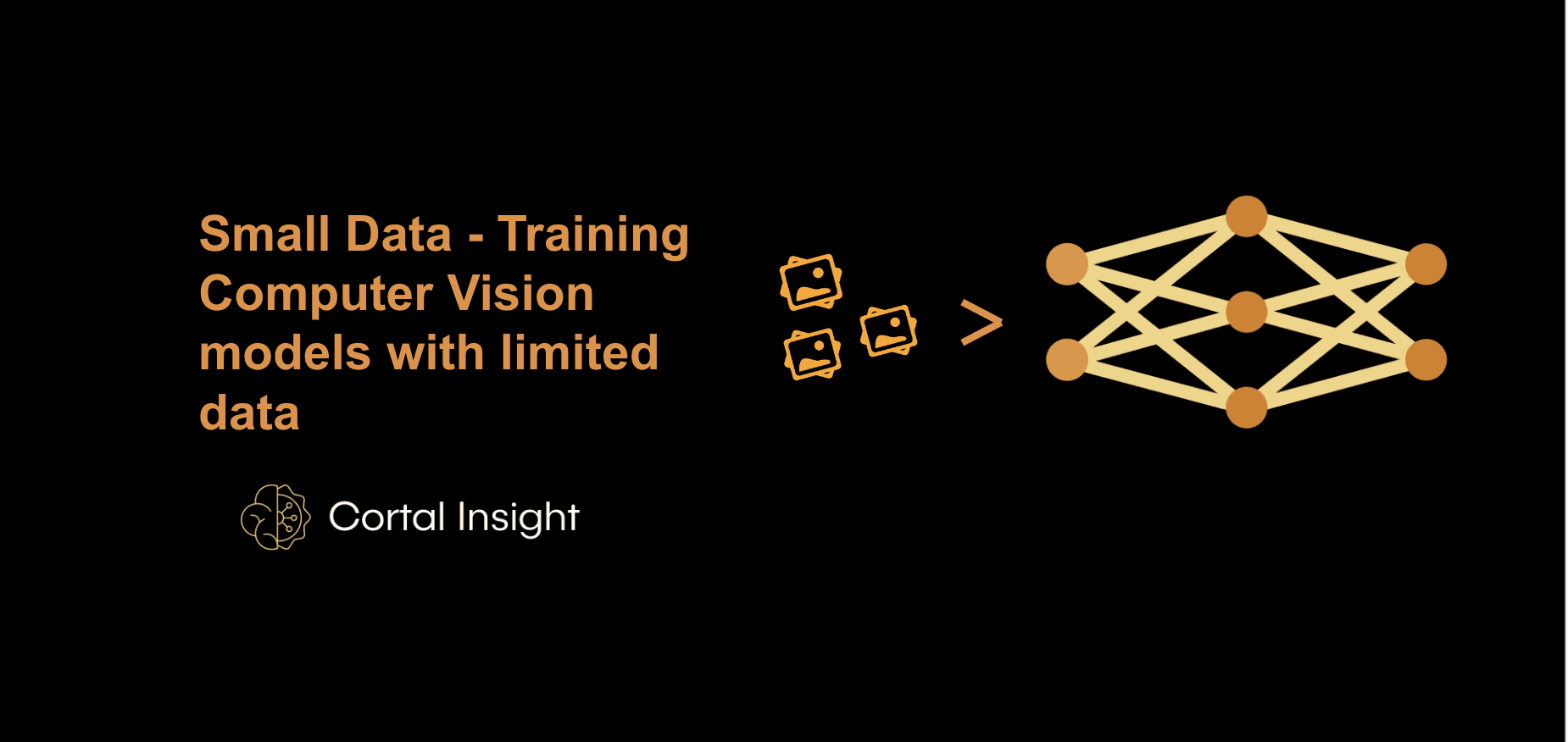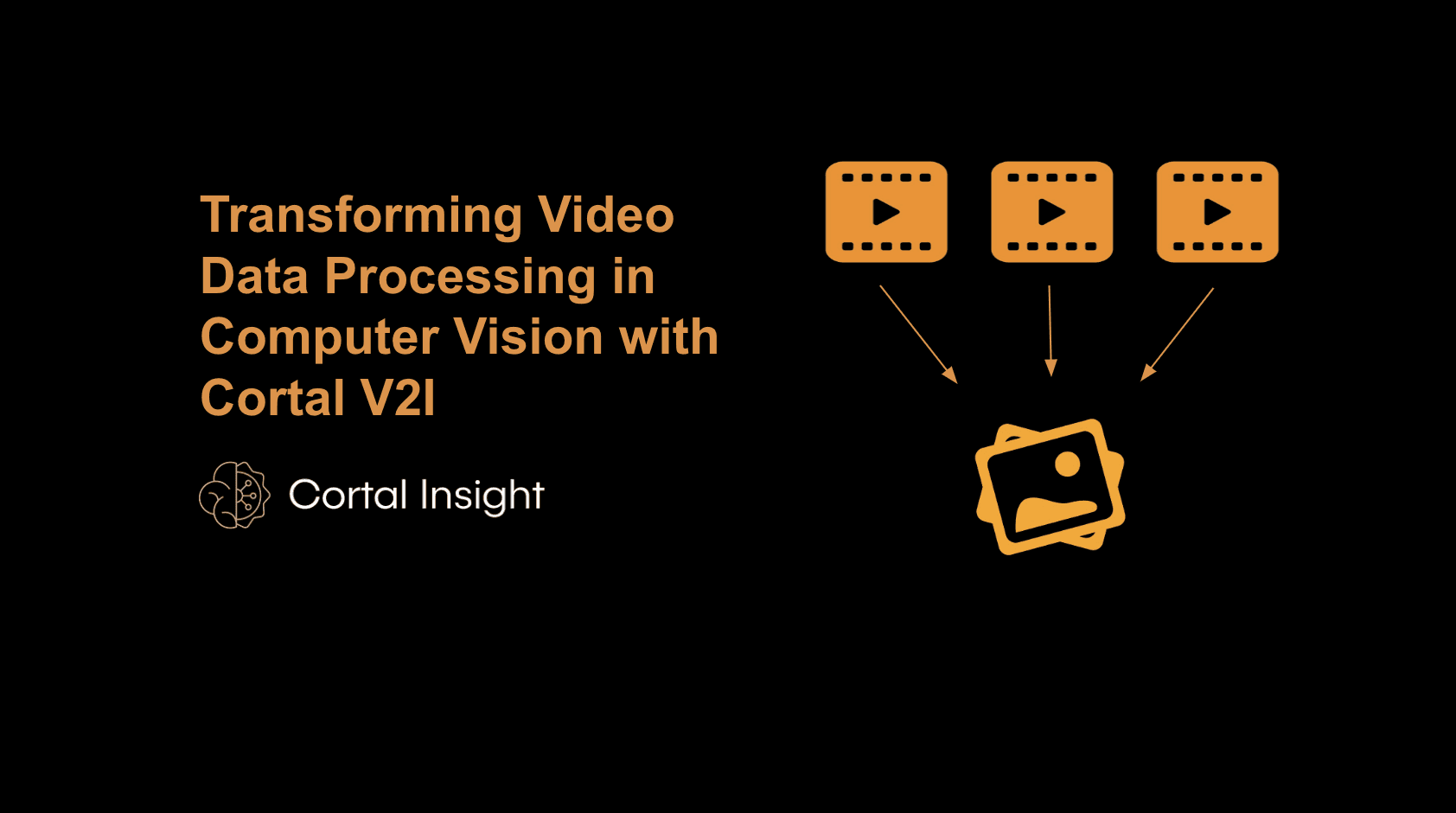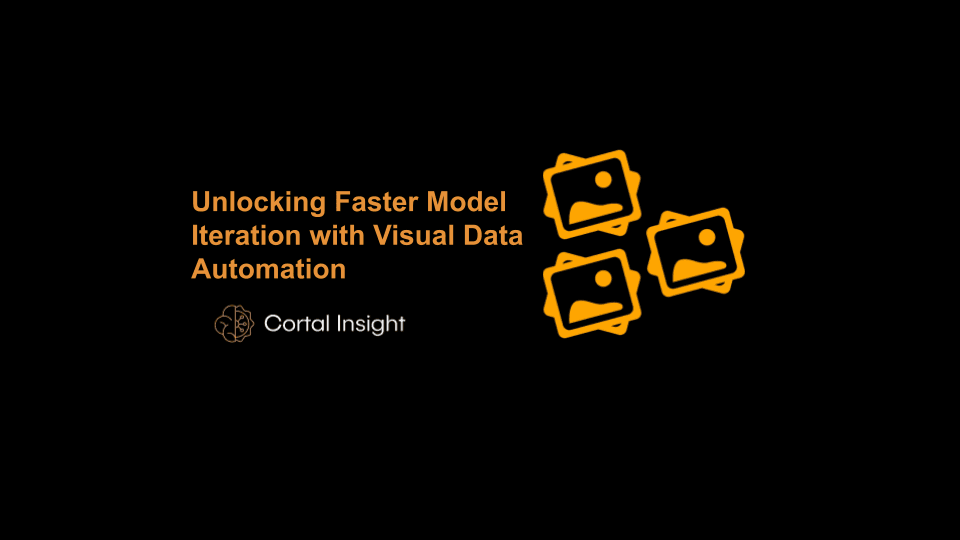Back
Small Data - Training Computer Vision models with limited data
Building Reliable Computer Vision Models with Limited Data
Aug 19, 2024


Usually, computer vision models need a ton of data to train and get better. But not every industry has easy access to enough data, especially in areas like manufacturing and retail, where the data is often proprietary. Despite this, accurate visual inspection, defect detection, and inventory management are still super important. So, creating strong computer vision models with limited data is a common challenge in these fields.
Here’s some tricks to overcome it.
Data Augmentation:
One of the most common, yet powerful way to address limited data is by augmentation. Expand your dataset by applying transformations like rotations, flips, and color adjustments. This increases diversity and reduces overfitting, improving model generalization. Explore tools like Albumentations or imgaug. Choosing the right set of augmentation is important, if not this can affect your model performance adversely.Few-Shot Learning:
Use few-shot learning techniques to train models that generalize from a very small number of examples. This is particularly ideal for rare defects or inventory control where data is scarce. Popular one’s include Model-Agnostic Meta-Learning (MAML) or Matching Networks they excel at recognizing defects, even when you have only a handful of labeled examples.
Synthetic Data Generation:
Synthetic data can be a viable alternative for data scarcity issues. We can leverage tools like StyleGAN or use 3D rendering tools like Blender to create artificial images that mimic real data, enhancing your model’s ability to handle various scenarios. In manufacturing, for instance, you can generate synthetic images of defective products by simulating various defect types.Transfer Learning:
Fine-tune pre-trained models on your custom dataset. Leveraging pre-trained models that have gathered knowledge from large datasets like ImageNet, you can achieve better accuracy and faster training with limited data. Use your choice of preferred frame work like TensorFlow or PyTorch.Domain Adaptation:
If your small dataset comes from a specific domain that is different from readily available large datasets, domain adaptation techniques can help. These methods adjust models trained on one domain (source) to perform well on another domain (target). In practice, a model trained on a large, general dataset of manufactured products can be adapted to work on your specific product line, even with limited examples.
Conclusion
By implementing these strategies, you can build high-performance computer vision models even with limited data. These techniques offer practical solutions for industries where data scarcity is a challenge, ensuring your models are robust, accurate, and ready to deliver value.
At Cortal Insight, we specialize in helping ML teams automate routine data tasks before training, accelerating their experimentation process. Explore how we can support your projects at Cortal Insight.
Usually, computer vision models need a ton of data to train and get better. But not every industry has easy access to enough data, especially in areas like manufacturing and retail, where the data is often proprietary. Despite this, accurate visual inspection, defect detection, and inventory management are still super important. So, creating strong computer vision models with limited data is a common challenge in these fields.
Here’s some tricks to overcome it.
Data Augmentation:
One of the most common, yet powerful way to address limited data is by augmentation. Expand your dataset by applying transformations like rotations, flips, and color adjustments. This increases diversity and reduces overfitting, improving model generalization. Explore tools like Albumentations or imgaug. Choosing the right set of augmentation is important, if not this can affect your model performance adversely.Few-Shot Learning:
Use few-shot learning techniques to train models that generalize from a very small number of examples. This is particularly ideal for rare defects or inventory control where data is scarce. Popular one’s include Model-Agnostic Meta-Learning (MAML) or Matching Networks they excel at recognizing defects, even when you have only a handful of labeled examples.
Synthetic Data Generation:
Synthetic data can be a viable alternative for data scarcity issues. We can leverage tools like StyleGAN or use 3D rendering tools like Blender to create artificial images that mimic real data, enhancing your model’s ability to handle various scenarios. In manufacturing, for instance, you can generate synthetic images of defective products by simulating various defect types.Transfer Learning:
Fine-tune pre-trained models on your custom dataset. Leveraging pre-trained models that have gathered knowledge from large datasets like ImageNet, you can achieve better accuracy and faster training with limited data. Use your choice of preferred frame work like TensorFlow or PyTorch.Domain Adaptation:
If your small dataset comes from a specific domain that is different from readily available large datasets, domain adaptation techniques can help. These methods adjust models trained on one domain (source) to perform well on another domain (target). In practice, a model trained on a large, general dataset of manufactured products can be adapted to work on your specific product line, even with limited examples.
Conclusion
By implementing these strategies, you can build high-performance computer vision models even with limited data. These techniques offer practical solutions for industries where data scarcity is a challenge, ensuring your models are robust, accurate, and ready to deliver value.
At Cortal Insight, we specialize in helping ML teams automate routine data tasks before training, accelerating their experimentation process. Explore how we can support your projects at Cortal Insight.
Usually, computer vision models need a ton of data to train and get better. But not every industry has easy access to enough data, especially in areas like manufacturing and retail, where the data is often proprietary. Despite this, accurate visual inspection, defect detection, and inventory management are still super important. So, creating strong computer vision models with limited data is a common challenge in these fields.
Here’s some tricks to overcome it.
Data Augmentation:
One of the most common, yet powerful way to address limited data is by augmentation. Expand your dataset by applying transformations like rotations, flips, and color adjustments. This increases diversity and reduces overfitting, improving model generalization. Explore tools like Albumentations or imgaug. Choosing the right set of augmentation is important, if not this can affect your model performance adversely.Few-Shot Learning:
Use few-shot learning techniques to train models that generalize from a very small number of examples. This is particularly ideal for rare defects or inventory control where data is scarce. Popular one’s include Model-Agnostic Meta-Learning (MAML) or Matching Networks they excel at recognizing defects, even when you have only a handful of labeled examples.
Synthetic Data Generation:
Synthetic data can be a viable alternative for data scarcity issues. We can leverage tools like StyleGAN or use 3D rendering tools like Blender to create artificial images that mimic real data, enhancing your model’s ability to handle various scenarios. In manufacturing, for instance, you can generate synthetic images of defective products by simulating various defect types.Transfer Learning:
Fine-tune pre-trained models on your custom dataset. Leveraging pre-trained models that have gathered knowledge from large datasets like ImageNet, you can achieve better accuracy and faster training with limited data. Use your choice of preferred frame work like TensorFlow or PyTorch.Domain Adaptation:
If your small dataset comes from a specific domain that is different from readily available large datasets, domain adaptation techniques can help. These methods adjust models trained on one domain (source) to perform well on another domain (target). In practice, a model trained on a large, general dataset of manufactured products can be adapted to work on your specific product line, even with limited examples.
Conclusion
By implementing these strategies, you can build high-performance computer vision models even with limited data. These techniques offer practical solutions for industries where data scarcity is a challenge, ensuring your models are robust, accurate, and ready to deliver value.
At Cortal Insight, we specialize in helping ML teams automate routine data tasks before training, accelerating their experimentation process. Explore how we can support your projects at Cortal Insight.

Preetham Rajkumar
Other articles you might like
Learn how to increase your productivity with calendars


